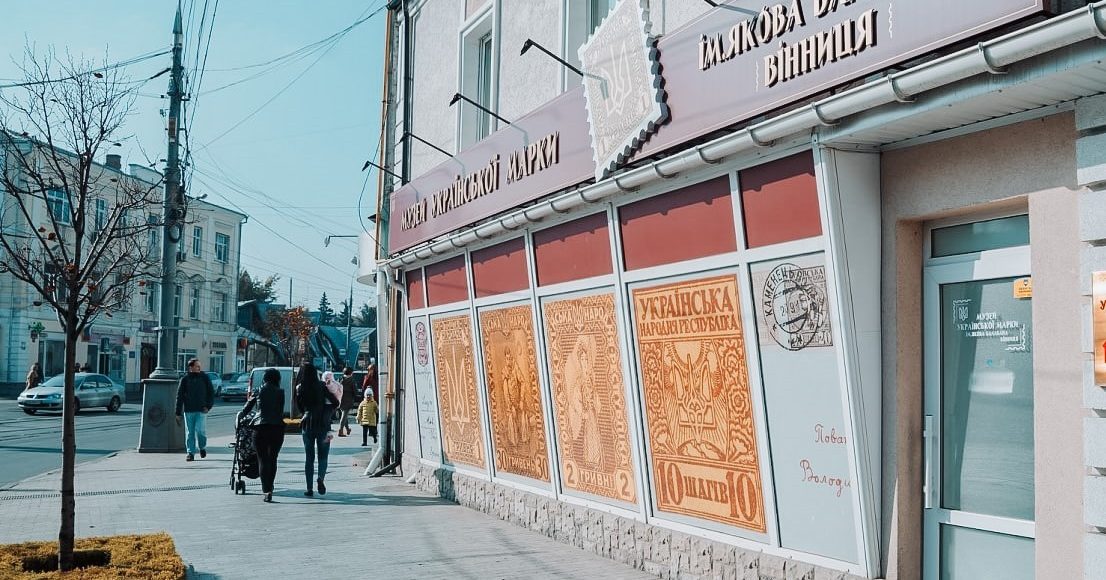
Legendary miniatures: top-5 exhibits of the Stamp Museum in Vinnytsia
After a several-year break, the Yakiv Balaban Museum of Ukrainian Stamps has reopened in Vinnytsia. This is the first and only museum of historical philately in Ukraine, which houses the largest collection of Ukrainian stamps in the world. It was opened in 2016 with the support of Vinnytsia City Council.
Philately has always been one of the most popular ways of collecting. But recently, thanks to the new release of Ukrposhta (Ukrainian postal service), stamps have become a new trend among Ukrainians and have drawn attention to the history of Ukrainian postage stamps in general.
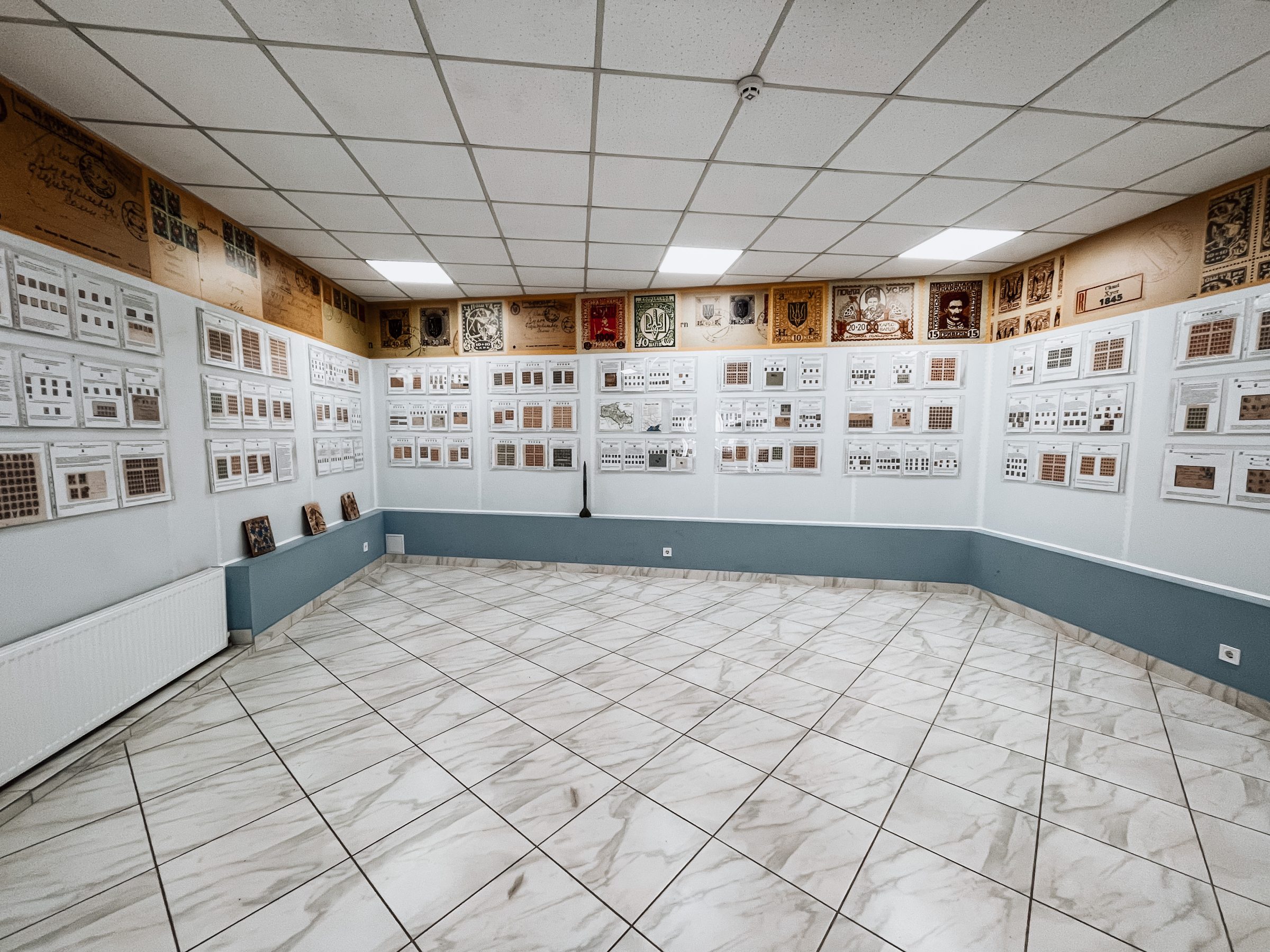
Interestingly, the exposition of the Yakiv Balaban Museum of Ukrainian Stamps traces the history of the formation of Ukraine’s statehood and the ethnic territories of Ukrainians. There are stamps of the UPR, WUPR, Hetmanate and Directory, the only Ukrainian stamps of the Soviet era, DP camp and diaspora mail, as well as modern stamps of independent Ukraine. The museum’s organizers say that the collection of Yakiv Balaban and his son Oleksandr is so large that the exhibition contains only 1% of all stamps. Some of them exist in a single copy.
In this article, we offer you to get acquainted with the five most interesting exhibits.
The money stamps (change stamps of the State Treasury)
The first Ukrainian postage stamps were issued in 1918, during the time of the Ukrainian People’s Republic. The drawings for them were made by the famous graphic artists Heorhii Narbut and Antin Sereda. Almost immediately, on the basis of the April 18, 1918 law of the Central Rada, they were issued as money stamps to replace the bills that had disappeared from circulation. They were supposed to function as coins until the last ones were minted.
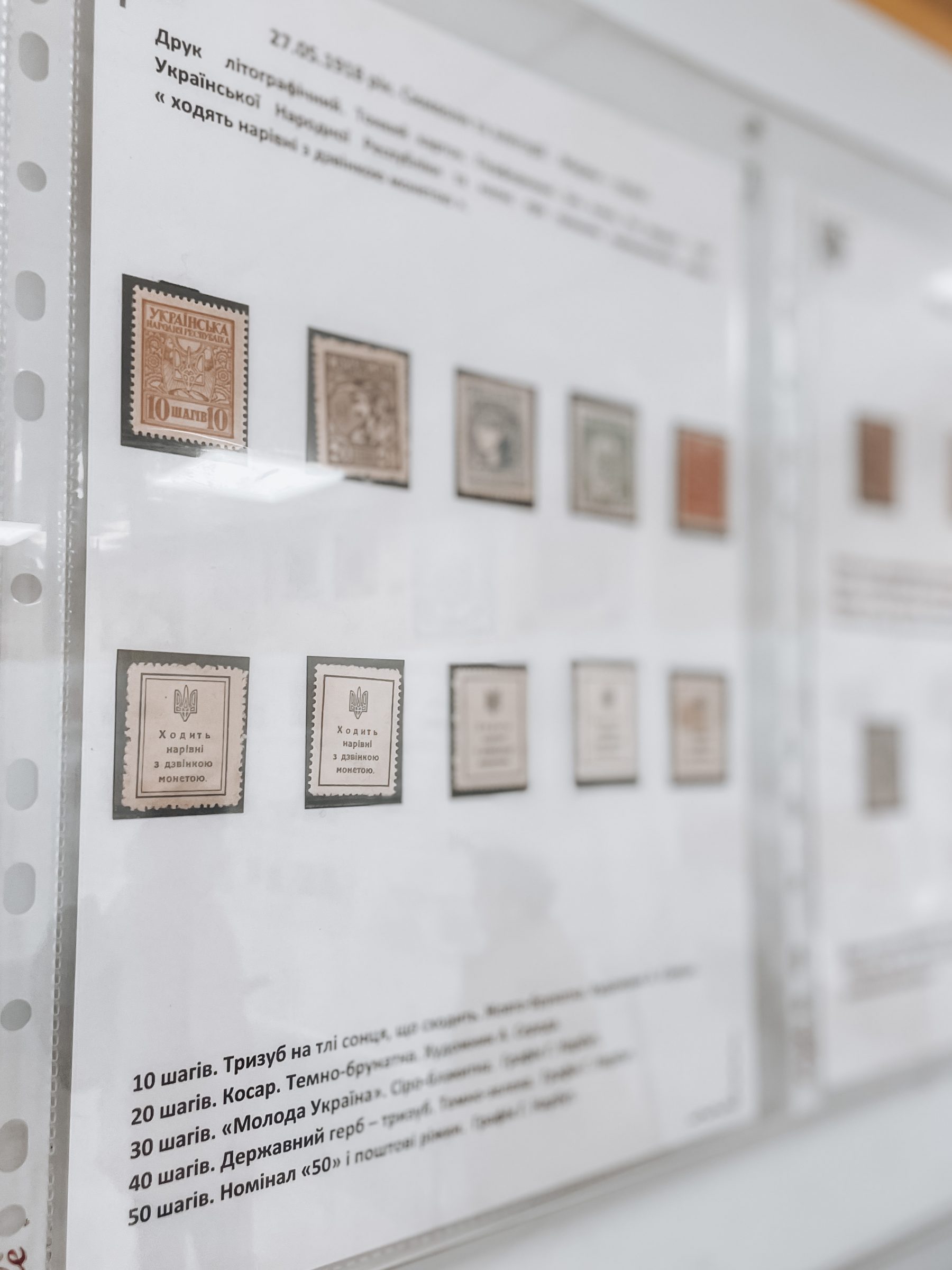
“These are the first stamps that free Ukraine started printing. They were prepared, the first impression was made, but there was a problem: during the tsarist empire, silver, gold and a little copper were the currency of exchange. When the empire collapsed, people started hiding silver and gold, and there was nothing to pay with (they disappeared from circulation). Then, only after making an impression of these stamps, the government decided to print them on thin cardboard, and they circulated as money with denominations from 10 to 50 shahs. On the back was the symbol of arms of the Ukrainian People’s Republic (a trident) and the inscription “They circulate on a par with a ringing coin,” – says Kateryna Antoniuk, a museum guide. “There was no special permission to send these money stamps on postcards, but still they were glued, and they were used as stamps. By the way, when Ukraine became independent in modern times, our first Ukrainian stamps were the same – with the drawing of Narbut and Sereda.”
Money stamps of collector’s quality are very rare, as they were usually carried in pockets and wallets, which made their condition very poor. Money stamps that have been in postal circulation are a rare collector’s item.
The stamps were printed in Kyiv with an edition of 200,000 to 1 million pieces each. And they were reprinted in Odesa and Kamianets-Podilskyi until 1920.
The stamps with the “Podilskyi” trident
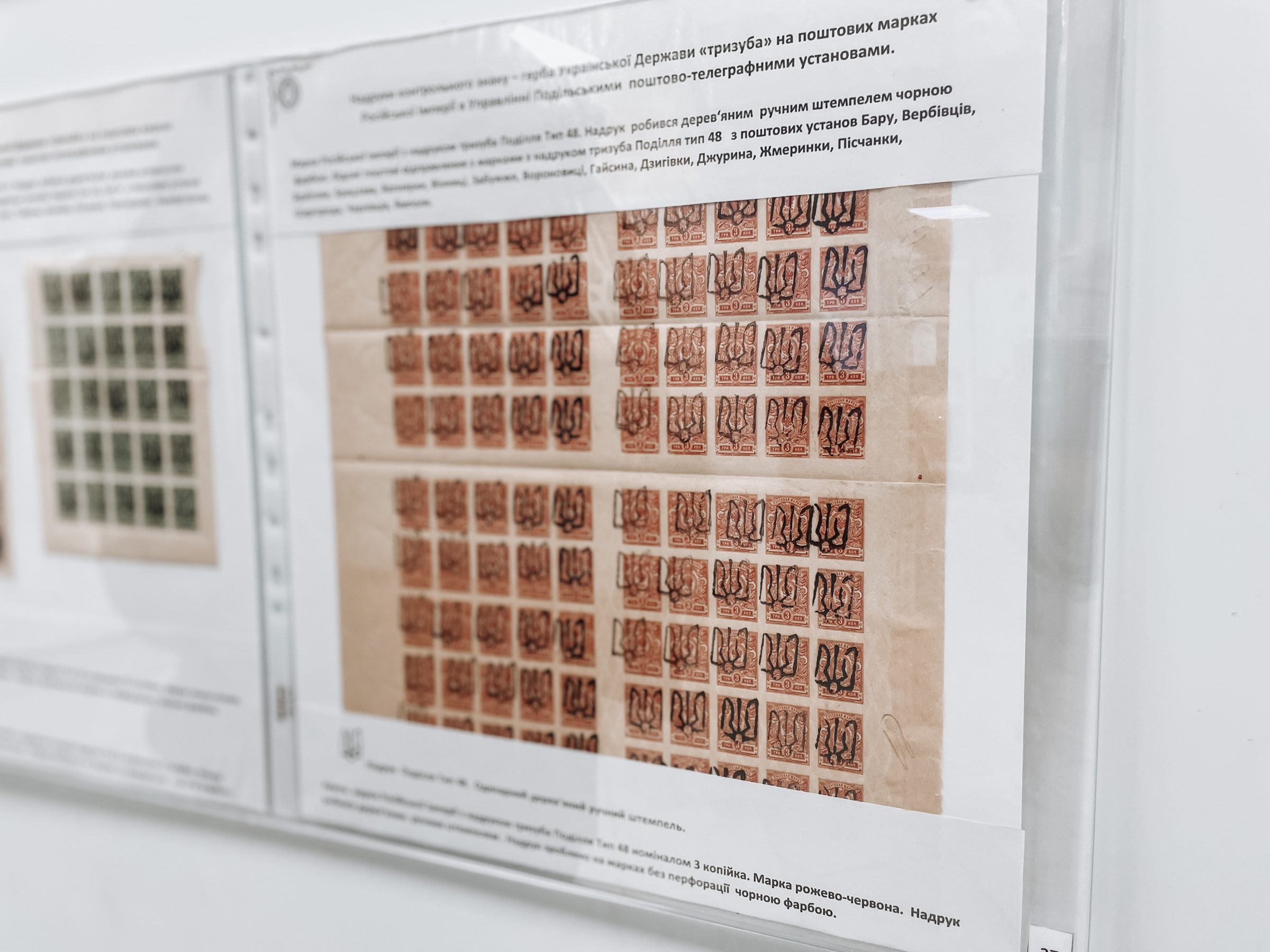
In addition to its own stamps, stamps of the Russian Empire were also used in the postal circulation in Ukraine until 1923. In August 1918 (after Hetman Pavlo Skoropadskyi came to power), the Ministry of Posts and Telegraphs of the Ukrainian State decided to print the coat of arms of the Ukrainian State – the “trident” – on all stamps of the Russian Empire that were in its possession. The provincial postal and telegraph offices were instructed to do this, using the available technical means. It was done manually, so the quality depended on the force of the pressure, the amount of paint, etc.
“Such cities as Odesa, Kharkiv, Mykolaiv were rich and could afford to make this stamp out of metal and rubber. That’s why the stamps of these provinces are neat and even. Our Podillia province was poorer, and this trident was carved of wood. It is impossible to replicate it. To date, we have found more than 100 varieties of the “Podilskyi” (Podillia) trident. As soon as we started marking these stamps with our stamp, they rose in price very sharply. They were bought up and re-bought abroad for very large sums of money,” says Kateryna Antoniuk. “There are witnesses that there was a farm near Lityn, and when the doctor and his family were leaving, a friend gave the younger boy a few letters with these Podillia tridents. When Ukraine hosted the Eurovision Song Contest in 2017, a man came from Canada to look for those people who were his grandparents. He said that the whole family was saved thanks to these stamps and four letters. They sold them, built a house, and had something to live on for some time. Imagine how expensive they were”.
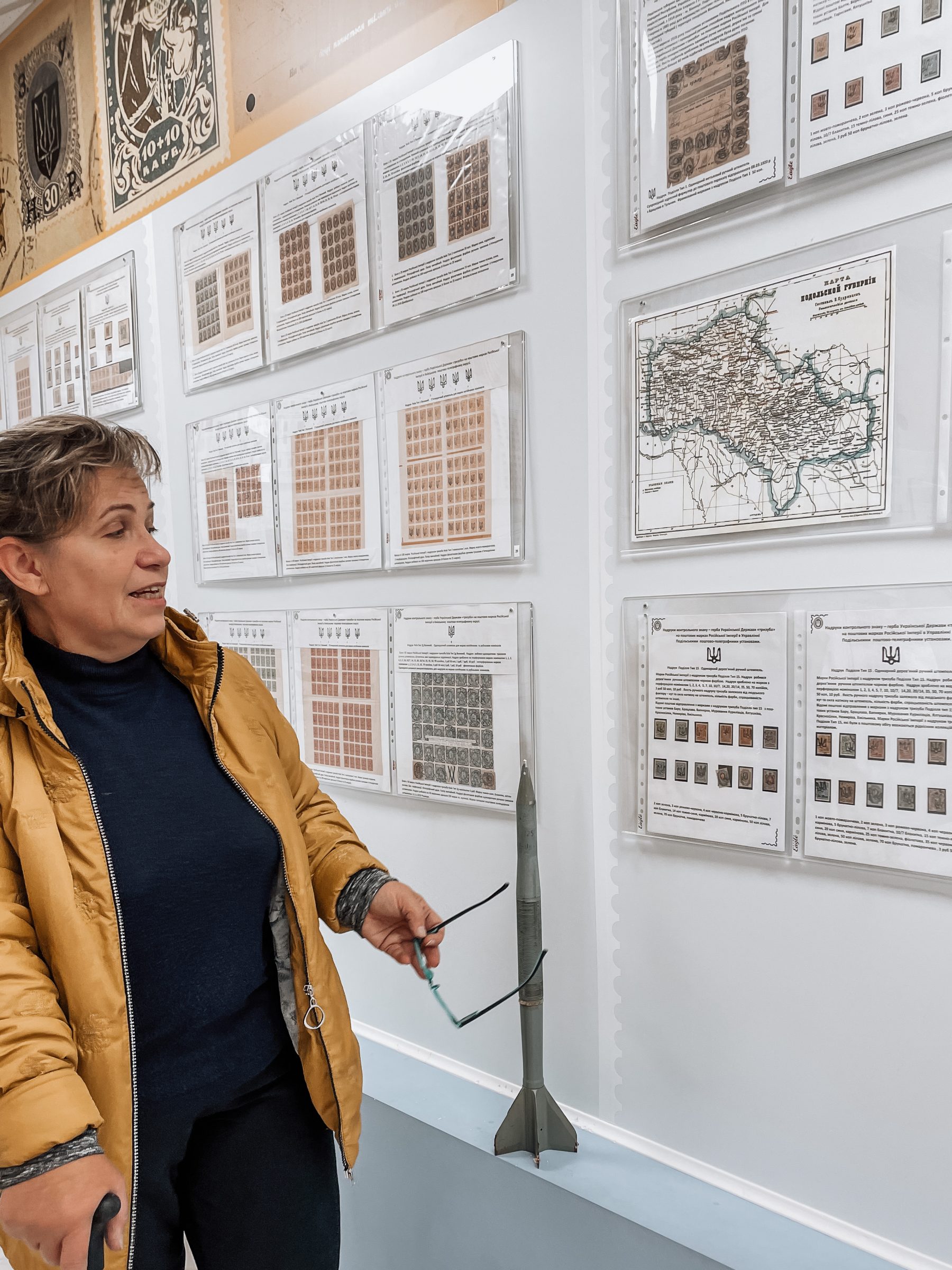
The museum has an enlarged image of stamps with the Podillia trident. These stamps are unique in that they were carved from wood. For comparison, the Kyiv Postal and Telegraph District even had lithographic printing, so the print of the coat of arms was openwork, with thin contour lines.
The envelope from Rostov-on-Don with a Ukrainian trident on the stamp
This is a stamp of the Russian Empire with the coat of arms of the Ukrainian state. But in this case, the overprint was made in the Katerynoslav postal and telegraph district with a manual rubber stamp. It was with this stamp that an envelope of an international letter was sent from Rostov-on-Don (now the Russian Federation) to Germany in October 1918. This copy is kept in the exhibition of the Museum of Ukrainian Stamps in Vinnytsia.
“If there was a Ukrainian post office in Rostov, then there was a Ukrainian administration. In 1918-19. It’s an interesting and symbolic story, especially now, during the Russian-Ukrainian war,” said museum director Oleksandr Biletskyi.
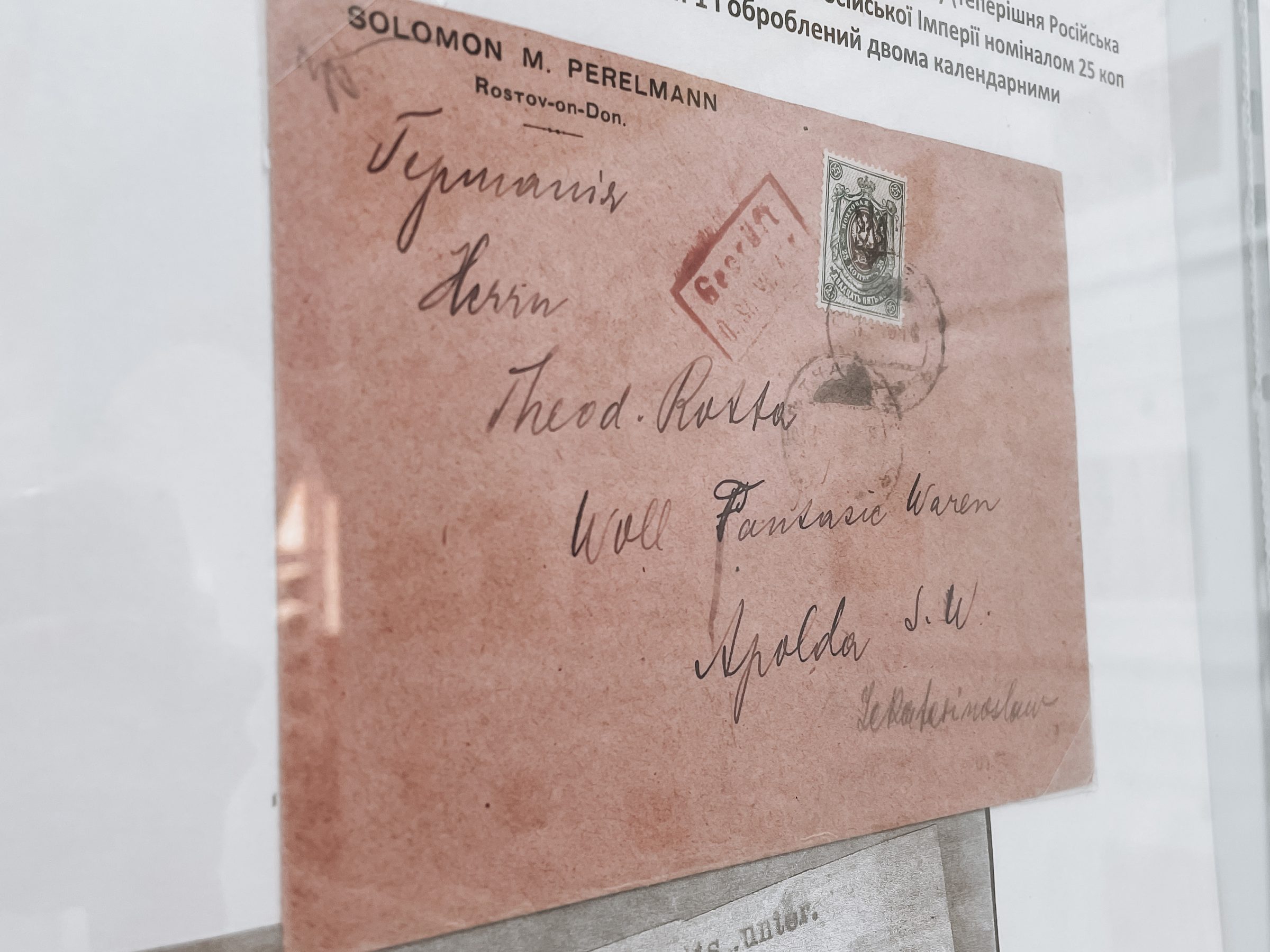
The charity postage stamps to help starving people
In 1921-1923, the Russian communist regime organized the first Holodomor of the Ukrainian people. Drought was added to the criminal policy, and if the grain had been redistributed, the tragedy could have been avoided. However, bread from Ukraine was exported for the benefit of the hungry Volga region and the North Caucasus. Food was collected with the help of armed groups. And as noted by the Holodomor Research Institute, in July 1922 five southern provinces of Ukraine were starving, also partly – Poltava and Kharkiv. The number of those who died then is still unknown. The Ukrainian Institute of National Remembrance says that most researchers name about 500,000 victims.
The fact of the famine in Ukraine was no longer concealed only when the death toll in the southern regions became massive. Even though the international community had been rescuing the starving population of the Russian Volga region for a year.
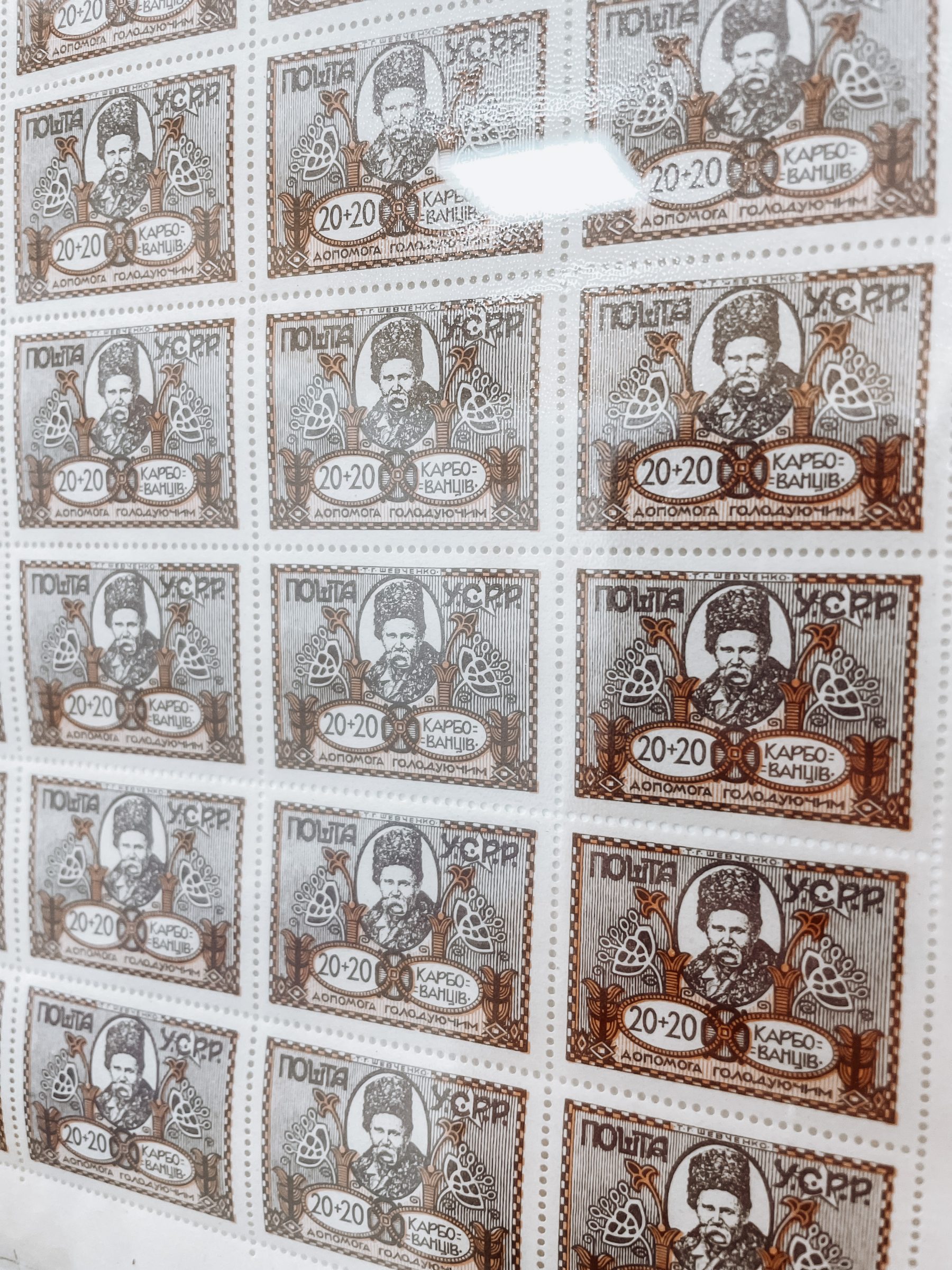
The first postal charity stamps (with an additional payment to the Russian republican fund for aid to the starving population) appeared in circulation on December 31, 1921, and they were intended specifically to help the Volga region. Stamps to help starving people in the Ukrainian SSR were released only in June 1923. These four stamps were the only ones in the entire history of Soviet Ukraine, then only all-Union stamps were used in circulation. Candidate of historical sciences Andrii Ivanets notes that due to the late and short-term circulation (from June 25 to July 15/August 18), the stamps of the UkrSSR were unable to fulfill entirely their functions to help victims of the first mass artificial famine in Ukraine.
The Balaban Museum of Ukrainian Stamps in Vinnytsia has several sheets of these charity stamps on display, including a portrait of Taras Shevchenko. Recently, Ukraine has resumed issuing charity stamps, including issues dedicated to the works of Banksy, Patron the dog, and the Armed Forces of Ukraine.
The stamp of Czechoslovakia “Carpathian Ukraine”
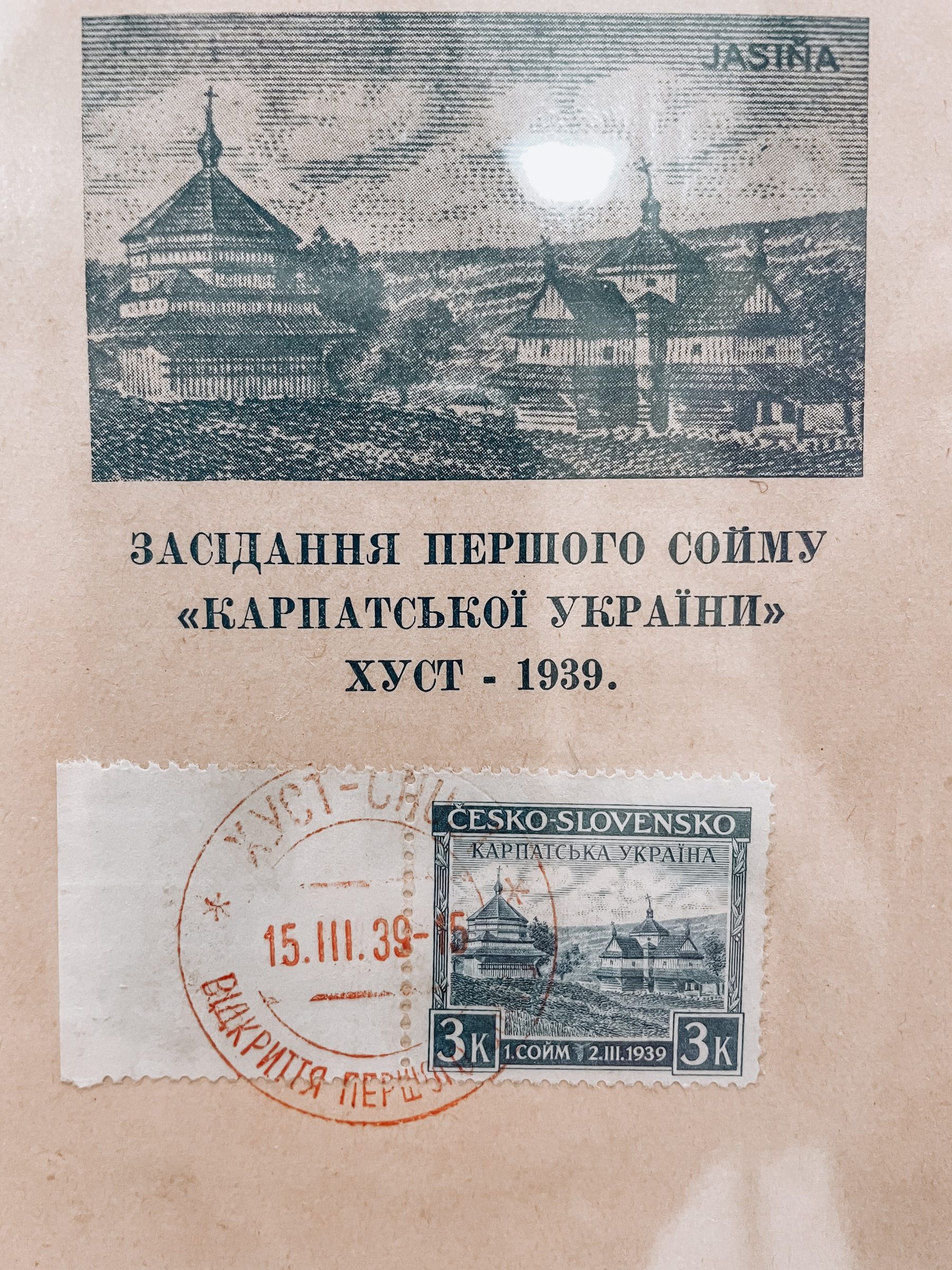
Letters and postcards with this stamp are rare. Their release was dedicated to the declaration of independence of Carpathian Ukraine, which took place on March 15, 1939 in the city of Khust. The Constitution adopted by the Soim defined the name of the state, the state language – Ukrainian, the flag as blue-yellow, and the national anthem “Shche ne vmerla Ukraina”. However, this state was not recognized in the world and it went down in history as a “one-day state”, because on March 16, the Hungarian occupation army entered the city.
“In Zakarpattia region, there is a village of Veliatyno, in which an old church was built without a single nail. It was this church that was depicted on the Czechoslovak stamp. Before the declaration of Carpathian Ukraine on March 15, preparations were made so carefully that they issued leaflets and a special bilingual stamp of redemption,” – said Kateryna Antonyuk.
It should be noted that postal items from Khust dated March 15, 1939 and marked with a special postmark are very rare in collections. The Museum has an envelope of a registered letter with such a stamp, sent from Khust to Prague on March 15.

Vinnytsia residents and guests can visit the unique exhibition of the Yakiv Balaban Museum of Ukrainian Stamps at 26 Soborna Street. The museum is open every Friday and Saturday from 12:00 to 18:00, as well as by appointment through the Vinnytsia Tourism Office (tel. +380 96 775 67 95). Ticket prices: 40 UAH (adult), 30 UAH (student), 20 UAH (for schoolchildren and pensioners). Admission is free for military personnel and large families